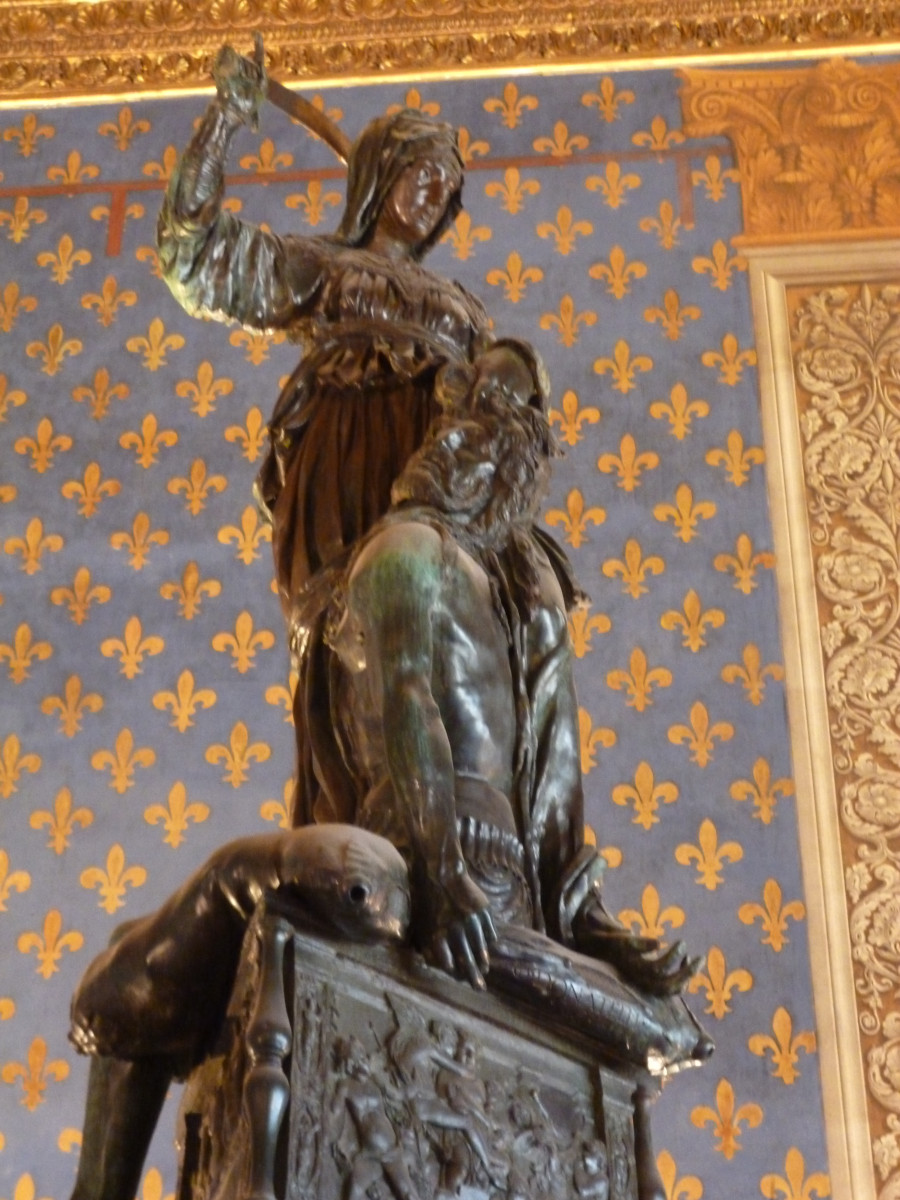Another Florentine church? Yes, because San Lorenzo was the Medici family church and is the burial place of many of them, including Cosimo, and also of Donatello, the artist he befriended and sponsored. We start with a little history of the building and its construction, paid for by Giovanni di Bicci di Medici and his son Cosimo, then follow up with tips on what to look out for when you visit. Finally, there are short biographies of Cosimo and Donatello, together with details of their friendship.
a little history



Founded in 393, San Lorenzo was the city’s oldest church, serving originally as its cathedral. This version was begun by Giovanni di Bicci di Medici in 1419. He’d decided to invest some of the huge wealth the family had made in building a family church. Progress was slow and the project had to be continued by Giovanni’s son Cosimo who threw money at it – 40,000 florins in fact, in the days when 150 florins would keep a family for a year. Even so, the church was eventually left unfinished because the planned marble exterior was never added. Today, it still has the original plain stone exterior which makes it look so different from the city’s other grand churches.
what to look for inside
The heart of the church is the Sagrestia Vecchia (Old Sacristy), containing the private chapel where Giovanni di Bicci is buried. It’s decorated by the Dome of the Zodiac, a glorious depiction of a dark night sky, dotted with golden stars, painted in about 1430, just as interest in astronomy was developing. Look out too for the two bronze pulpits, carved by Donatello himself when he was in his eighties. The Passion Pulpit shows scenes from the last days of Christ’s life and the Resurrection Pulpit continues the story after the crucifixion. Down in the crypt, you will find the tombs of Cosimo di Medici and Donatello, buried side by side in honour of their friendship.
cosimo di medici



It was Cosimo who took the family banking business to great heights and he used much of his money and influence to promote the cultural and intellectual life of the city. Some of Florence’s most beautiful buildings – San Marco Monastery, the Palazzo Medici-Riccardi and, of course, San Lorenzo – were built by him. The books and manuscripts he collected formed the basis of the city’s great library and he founded the Platonic Academy to promote intellectual discussions. He was also a patron to a number of the greatest artists of his time, including Filippo Lippi and Donatello, subsidising them, even taking them to live with his family, so they could focus on their creative work free of financial worries.
donatello



Born in Florence in 1386, Donatello’s well-known works can be found all over the city. He sculpted pieces for the Baptistery and the Bell Tower. Well-known statues of his include Judith and Holofernes, dramatically capturing the moment when Judith is about to decapitate her victim, (Palazzo Vecchio), the haunting carving of Mary Magdalen (Opera del Duomo Museum) and his statue of David (Bargello). This unusual portrayal shows David, so heroic when depicted by others, as a rather small man, standing hand on hip and wearing a little hat. And here in San Lorenzo are two more of his masterpieces, the pulpits (described above) and the heavy bronze doors carved with biblical scenes.
Giorgio Vasari, writing his Lives of the Artists a century after Donatello’s death, described him as ‘most liberal, friendly and courteous to all’ and told how he left money hanging in a basket in his room so other artists in need could help themselves. But he had a temper too, and once during a quarrel with a merchant who didn’t want to pay the price agreed for a finished piece, he hurled the completed bronze statue from a parapet so that it shattered into pieces on the ground. When the remorseful merchant offered to pay double for a new piece, Donatello flatly refused to countenance the idea.
the friendship of cosimo di medici and donatello



The friendship between Donatello and his patron was one of the most important relationships in both their lives. Cosimo took the artist in to live as part of his family and often bought him clothes, including an elaborate scarlet cloak, given in recognition of Donatello’s great talent. As Cosimo prepared to die, he made sure that Donatello would be left an allowance and that other members of the family would continue to look after him. Donatello could be infuriating, but Cosimo explained: ‘One must treat these people of extraordinary genius as if they were celestial spirits, not as if they are beasts of burden.’ How fitting then, that they are buried side by side in the crypt of San Lorenzo.
On the podcast there is also a description of the San Lorenzo area, with colourful quotations from its medieval past and a description of the bustling market area which it is today.
Listen to the POdcast
Reading suggestions
The Medici by Paul Strathern
The Medici by Mary Hollingsworth
The Lives of the Artists by Georgio Vasari
links for this post
Previous episode The Medici Family and their Art
Next episode Around San Lorenzo and Lorenzo il Magnifico
Last Updated on October 27, 2023 by Marian Jones





